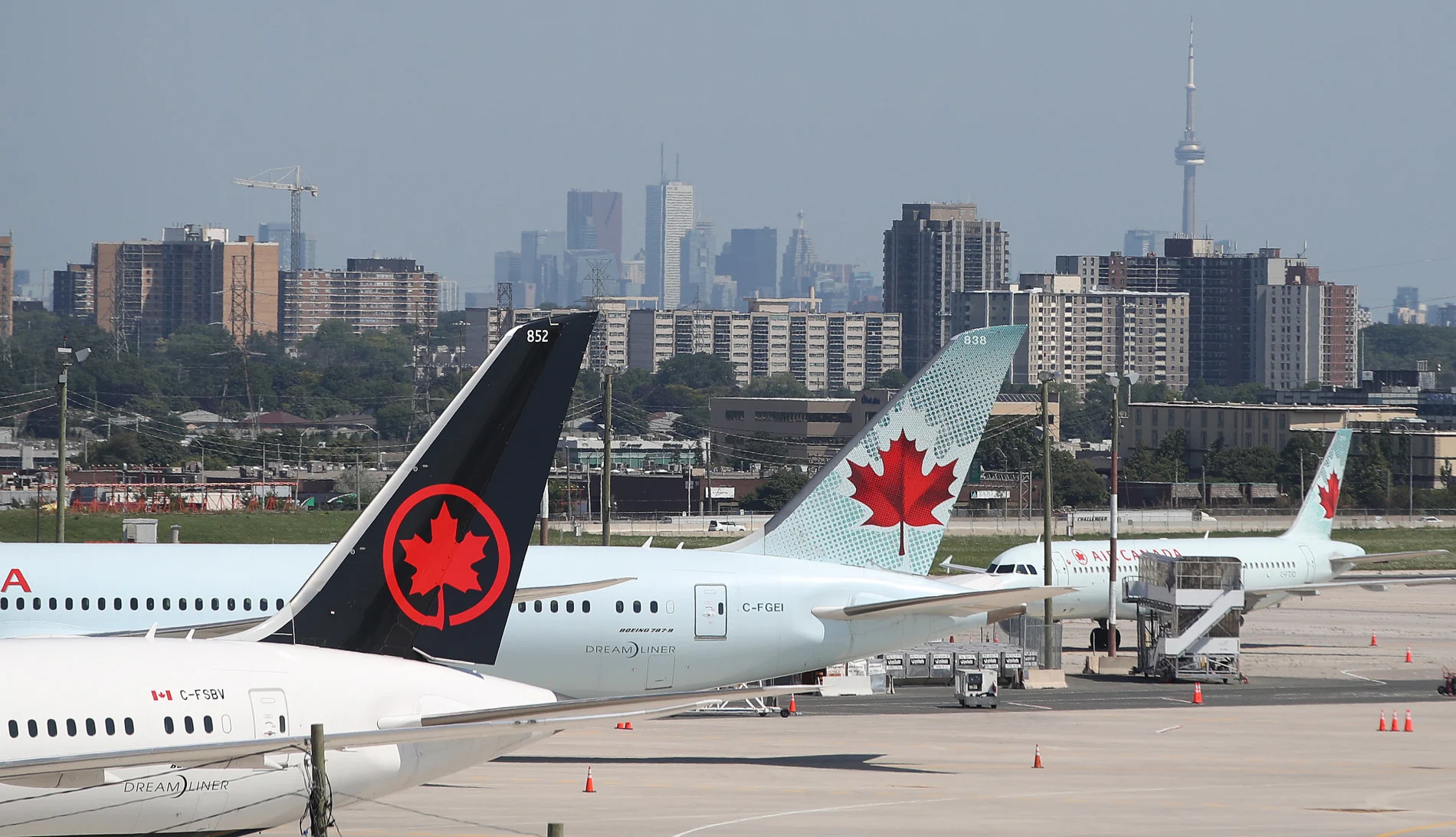
Canada's aviation sector aims to become net zero by 2050, here's how
Canada’s air transportation system covers about 18 million square kilometres, and several different technologies and strategies will be needed to reach net zero by 2050.
Global aviation contributed to two percent of total greenhouse gas emissions in 2019 and trends indicate that emissions from this sector will continue to grow unless significant changes are made. With Canada being home to the second largest airspace in the world, pressure is mounting to innovate the notoriously polluting sector.
Transport Canada, in collaboration with the Canadian federal government and aviation industry, recently announced the new Aviation Climate Action Plan that aims to take “concrete action to meet its climate goals and ensure that Canadians have an efficient and environmentally friendly transportation system,” according to the press release.
The Action Plan estimates that Canadian air operators released 22 megatons of carbon dioxide equivalent emissions in 2019 both domestically and internationally, which was a 75 per cent increase from emissions in 2005. Although technological improvements have been made, the growth of this sector and subsequent emissions have significantly outpaced sustainable improvements.
The three main components of the Action Plan are: reach net zero emissions by 2050 in the aviation sector, have sustainable fuels make up 10 per cent of total fuel usage by 2030, improve efficiency in the sector and reduce pollution from aviation activities, and offset the remaining emissions.
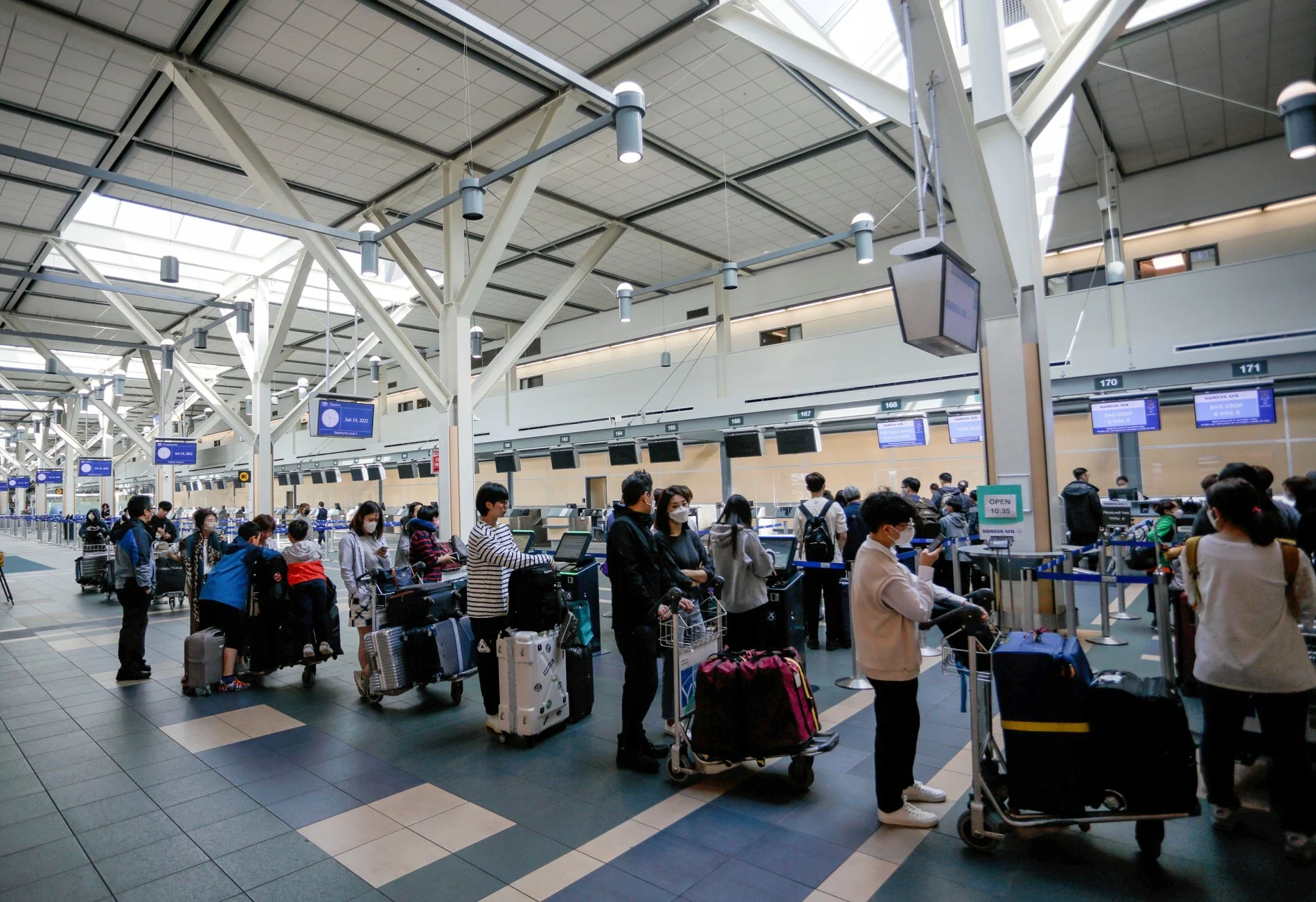
Travellers line up at Vancouver International Airport in Richmond, British Columbia, Canada, on June 14, 2022. (Xinhua News Agency/ Getty Images)
Because of the sheer size and rapid growth of the aviation industry, realizing these goals is an ambitious feat and largely relies on decisions made by industry leaders, political will, and certain strategies that some experts argue encourage polluters to continue polluting.
“Aviation is complicated because there are lots of different sectors and options, so it's very good to see a large comprehensive plan being brought forward,” Paul Parker, a professor at the University of Waterloo, who is specialized in energy, sustainability, aviation.
“The international aviation industry is making good progress in their planning. Now [Canada] needs to make good progress in our implementation.”
Fuel and technological advancements
Canada is one of 23 countries that signed the International Aviation Climate Ambition Coalition at COP26, which is a binding agreement where each signatory creates a plan to reduce national aviation emissions and submits it to the International Civil Aviation Organization (ICAO). This plan will undergo reviews in 2024, 2027, and 2030.
A first for Canada: New type of nuclear plant opening by 2028
The Action Plan states that developing and deploying green aerospace technologies, including battery electric, hybrid, and hydrogen propulsion will be essential to reducing emissions in the longer term. Estimates indicate these technologies could be commercially available for regional and smaller aircraft between 2030-2035 and single-aisle hybrid technology could be available by 2040-2045.
However, these advanced aircraft technologies are expected to account for just 1.9 per cent of the emissions reductions by 2050. The largest decline in emissions will come from sustainable aviation fuels, which could contribute 31.1 to 46.5 per cent emissions reductions by 2050.

An airplane being refuelled on the tarmac. (Tobias Titz/ fStop/ Getty Images)
In 2018, ASTM International approved jet fuel with a blend of up to 50 per cent ethanol for aircraft usage. These sustainable fuels are ethanol made from biomass such as corn or forestry residues and are designed to have identical performance and safety characteristics compared to petroleum. Parker noted that forestry waste and agriculture waste are potential options for expanding domestic feedstocks to produce sustainable aviation fuel.
The Action Plan states that there is no currently “meaningful” production of sustainable fuels for aviation in Canada, however, recent announcements by private companies indicate the intent to produce these fuels have been made.
For example, SixRing Inc. is a Calgary-based company that produces sustainable aviation fuels from plant-based materials from agriculture and forestry. In September, the company announced that it received over $1.4 million in funding from the federal government to scale up production.
Watch below: Is flight shaming celebrities for being 'climate criminals' really working?
Offsetting a “necessary” component of the plan
The Action Plan states that carbon offsetting will play a significant role in reaching net zero by 2050 due to the need for breakthrough technology and the time required for these new technologies to be tested, certified, manufactured, and deployed. Estimates predict that at least 12 megatonnes of emissions would need to be offset in 2050.
Carbon offsetting is a controversial approach to attain a net zero status. Through this strategy, companies and governments can continue releasing carbon dioxide emissions while participating in methods that remove carbon from the atmosphere, such as planting forests. By capturing more carbon than they emit, they create a net negative carbon impact.
In an interview with CBC, Sola Zheng, a researcher at the San Francisco-based International Council on Clean Transportation, stated that carbon offsets in the aviation industry are “not really solving any problems” because “other sectors [are] trying to reduce emissions on behalf of the aviation sector.”
“I know some people don't like having offsets in there. But I think that that's the honest answer,” said Parker. “What we want to do is to talk about the quality of the offsets, as not all projects are equal. I think that it is appropriate to have offsets in there to recognize that we will still have some carbon components.”
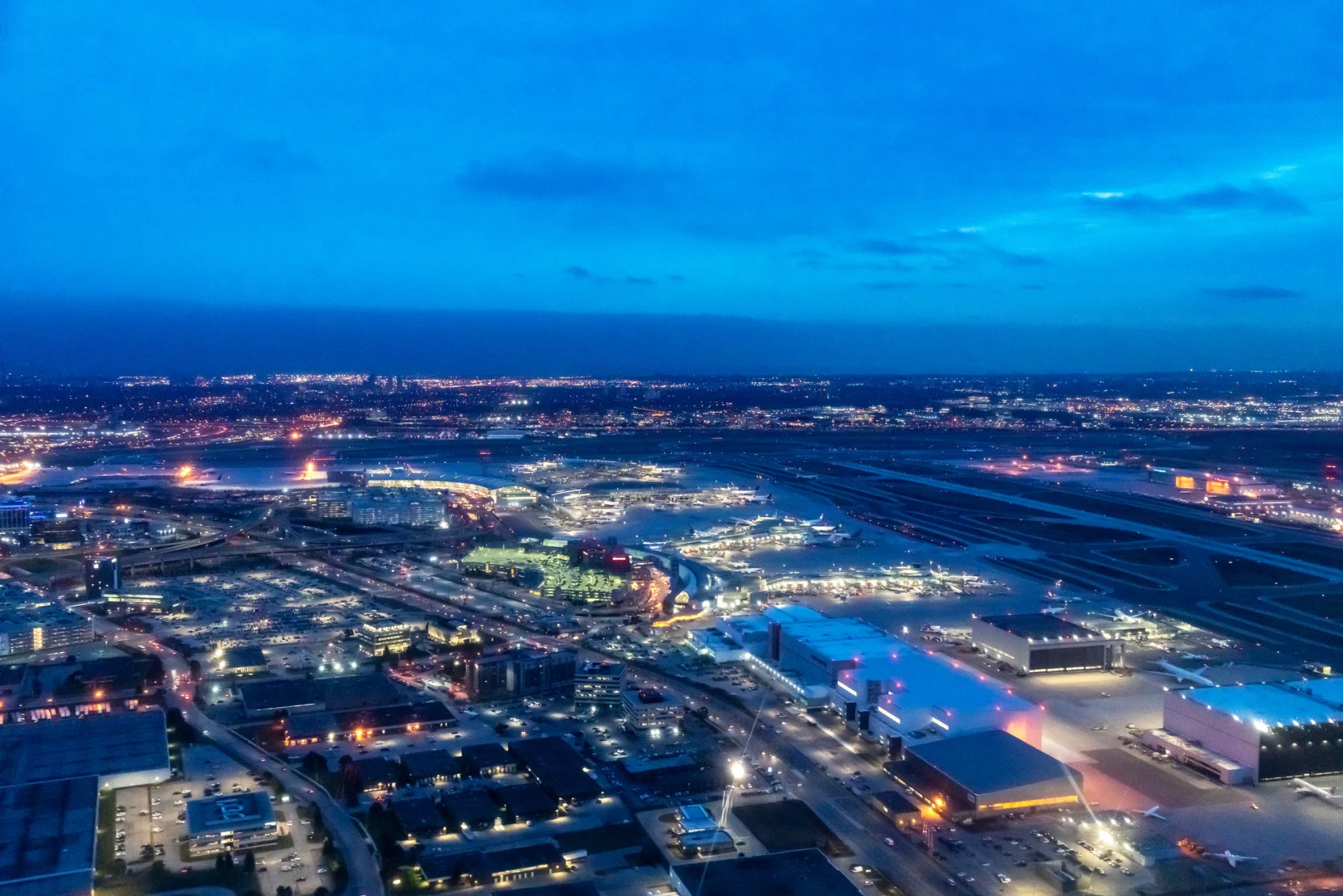
Aerial view of Pearson International Airport in Toronto. (DoraDalton/ iStock/ Getty Images Plus)
Electrifying the fleet
Some of the top players in the industry already have ambitious developments underway to produce battery-electric planes.
In 2021 Boeing announced that all of their commercial airplanes will be certified to fly on 100 per cent sustainable fuels by 2030. The following year, Airbus announced its plan to develop the first zero-emission commercial aircraft by 2035, which will be powered by hydrogen technology.
In Canada, certification of new aviation technologies and aircraft involves a rigorous process that can take between five to 10 years. However, progress is being made.
“The first [electric] plane in the world, Pipistrel Velis Electro, has been certified in Europe. We're not certified in Canada yet, so we're bringing in one from Europe so that Transport Canada can have a look,” explained Parker. “This is a very lightweight, new composite material technology that we're looking at. So a big change from the previous heritage planes that we have.”
“If you ask our aviation students, they want to fly and they don't want to pollute.”
Canada’s largest airline, Air Canada, is taking some steps towards electric aviation. In September, the company announced that they invested $5 million and became a minority shareholder in Heart Aerospace, a Swedish startup company that is developing electric-hybrid aircraft.
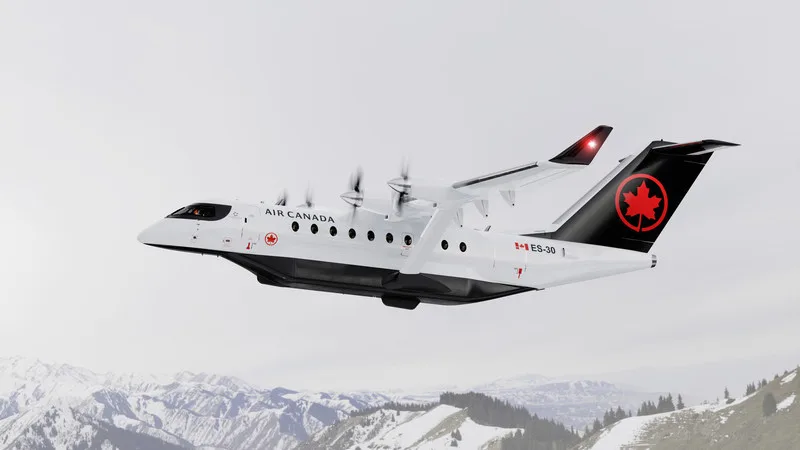
The ES-30 electric-hybrid aircraft will fly on battery power. (Air Canada/ Heart Aerospace)
Air Canada’s acquisition includes the purchase of 30 battery-powered regional aircraft that are expected to be in operation by 2028. The ES-30 electric-hybrid aircraft can hold up to 30 passengers, has a charge time of 30 to 50 minutes, a range of 200-800 km depending on the number of passengers, and will be powered by lithium-ion batteries.
Improving efficiency
Operational improvements on the ground at airports and in the air are expected to lower greenhouse gas emissions.
Drones will play a growing role in airport traffic management to improve efficiency. Traffic controllers will also be able to have more accuracy with new software with enhanced weather predictions and surveillance.
Aircraft contrails, which are the two condensation trails that a plane’s exhaust gases create, also have substantial impacts on the climate. The water vapour that is released from the plane forms these contrails, which eventually create cirrus clouds that can trap heat that is radiating away from the Earth’s surface and can raise temperatures, especially during the night.
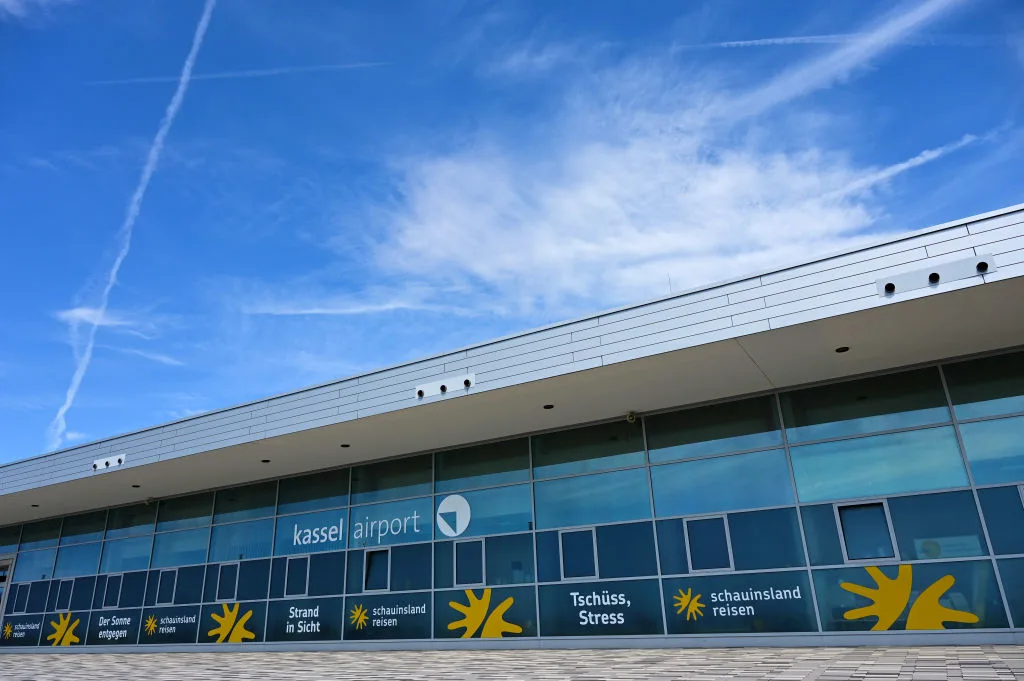
Clouds and vapour trails hang over the terminal of Kassel Airport in Germany on August 4, 2022. (Uwe Zucchi/ picture alliance/ Getty Images)
Several studies have found that flight path modifications can reduce or eliminate contrail formation. In partnership with Transport Canada and the National Research Council. Environment and Climate Change Canada will develop an experimental meteorological tool over the next three years that will identify and predict contrail-forming zones within Canada’s airspace so alternative flight paths can be suggested to avoid persistent contrail formation.
“You can use today's technology to reduce the impact by looking at alternate routing, whether that means a change in altitude or a change laterally. We don't have to wait for a new fleet, we can start implementing better and more efficient flight planning,” said Parker.
With all these strategies considered, Parker noted that these sustainable developments are good news for the Canadian economy.
“It’s a great opportunity to look at the Canadian package: we have the resources and we’re bringing in new battery investments. It'd be great to have electric planes being built here and there are a lot of people pushing for that. Aviation is so important because we're such a big country, and we can be a leader in low-carbon aviation, said Parker.
Thumbnail image: Pearson International Airport in Toronto, Canada. (Steve Russell/ Getty Images)











